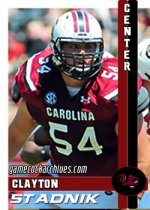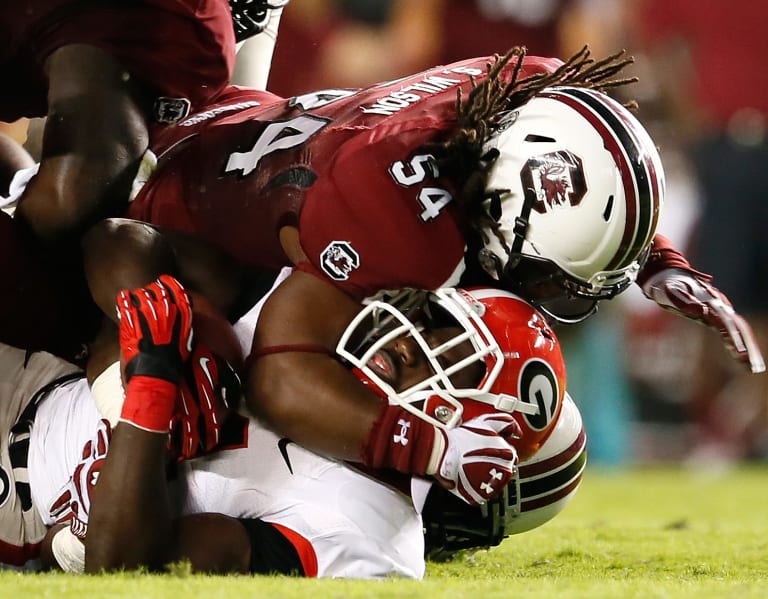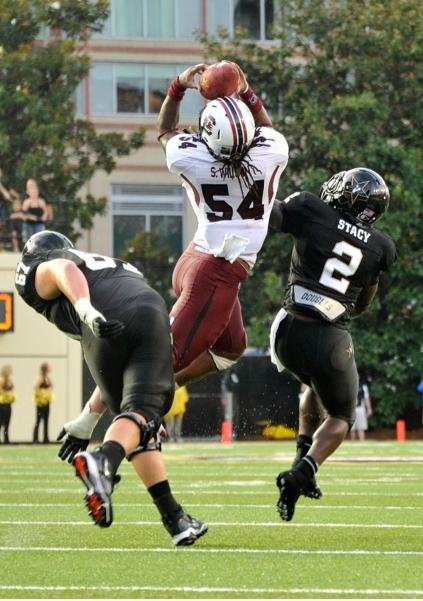Gamecock Fanatics
You are using an out of date browser. It may not display this or other websites correctly.
You should upgrade or use an alternative browser.
You should upgrade or use an alternative browser.
Countdown to Kickoff
- Thread starter Swayin
- Start date
The 57th Fighter Group in WW2, home to the 65th Fighter Squadron "Fighting Gamecocks". A nice big old chip on this Cock's shoulder.

http://www.57thfightergroup.org/





Look familiar? Our logo was designed by legendary football coach Paul Dietzel, himself a B-29 Superfortress pilot in WW2.
https://www.ww2online.org/view/paul-dietzel#early-life
Easy to see how squadron logos influenced the design of our own from someone of his generation.
Also the name for a restaurant near Atlanta.
https://www.the57threstaurant.com/

http://www.57thfightergroup.org/




Look familiar? Our logo was designed by legendary football coach Paul Dietzel, himself a B-29 Superfortress pilot in WW2.
https://www.ww2online.org/view/paul-dietzel#early-life
Easy to see how squadron logos influenced the design of our own from someone of his generation.
Also the name for a restaurant near Atlanta.
https://www.the57threstaurant.com/
Last edited by a moderator:
'57 Thunderbird.
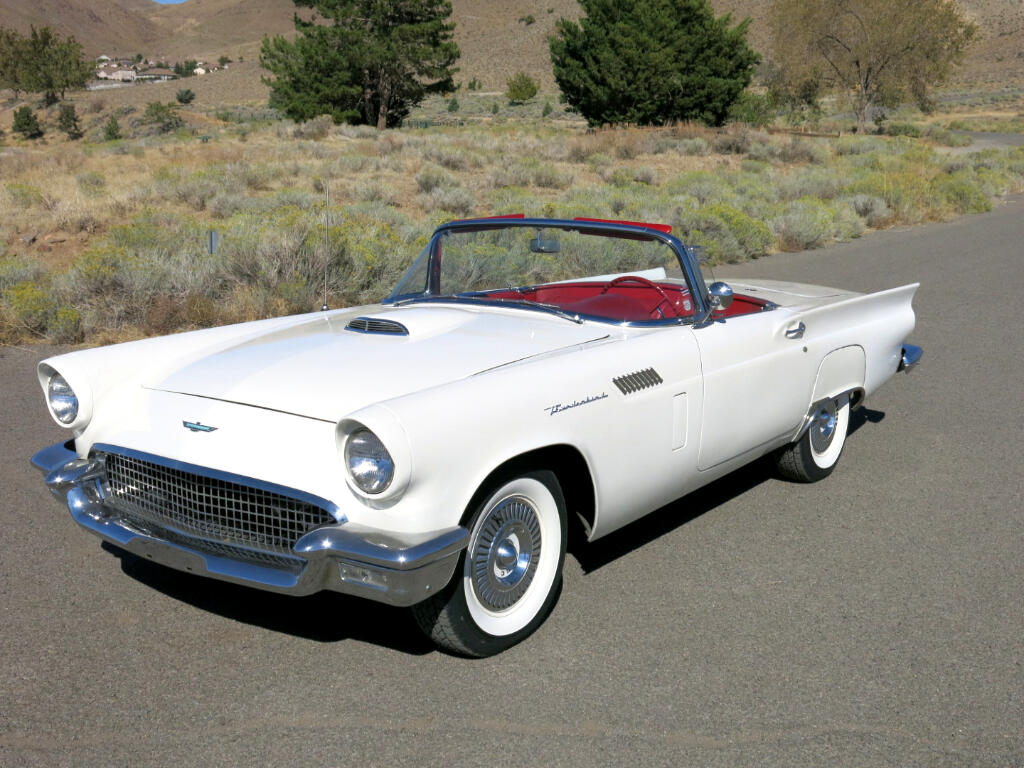

'56 Chevy.


'56 Thunderbird.
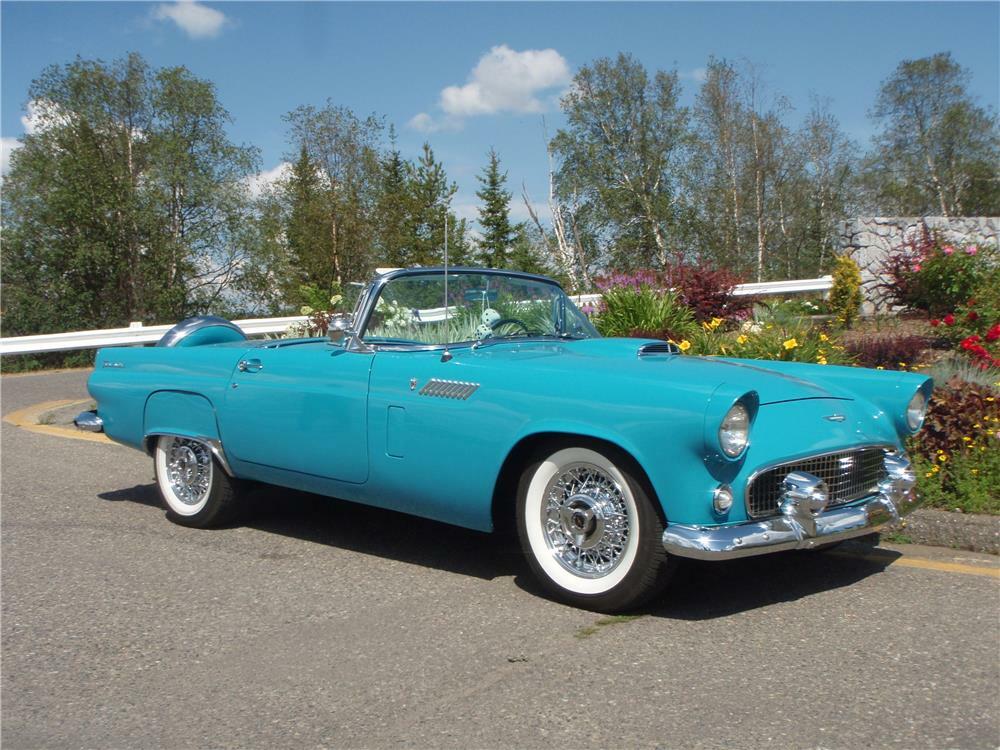
USS Columbia, CL-56.
_off_San_Pedro_1945.jpg/1280px-USS_Columbia_(CL-56)_off_San_Pedro_1945.jpg)
_in_Lingayen_Gulf_on_6_January_1945_(NH_79450).jpg)
https://en.wikipedia.org/wiki/USS_Columbia_(CL-56)
_off_San_Pedro_1945.jpg/1280px-USS_Columbia_(CL-56)_off_San_Pedro_1945.jpg)
Columbia is struck by a kamikaze on January 6, 1945.USS Columbia (CL-56) was one of 26 United States Navy Cleveland-class light cruisers completed during or shortly after World War II. The ship, the sixth US Navy ship to bear the name, was named for the city of Columbia, South Carolina. Columbia was commissioned in July 1942, and saw service in several campaigns in the Pacific. Like almost all her sister ships, she was decommissioned shortly after the end of the war, and never saw active service again. Columbia was scrapped in the early 1960s. A memorial to the ship and men who served on her exists in Columbia, SC.
World War II
1942-43
Sailing from Norfolk on 9 November 1942, Columbia arrived at Espiritu Santo, New Hebrides on 10 December, and joined in the patrols west of the New Hebrides in support of the continuing struggle for Guadalcanal. On 29 January 1943, while cruising off Rennell Island to cover the movement of transports to Guadalcanal, Columbia's group came under heavy air attack, and the battle of Rennell Island followed, with land and carrier-based aircraft joining in to protect the American ships. Columbia aided in shooting down three enemy planes in this battle. Based out of Efate from 1 February, Columbia continued her patrols in the Solomons, and in June carried out a bombardment and mining mission on 29–30 June, coordinated with the New Georgia landings. On 11–12 July, she bombarded Munda, and until 5 September, when she sailed for a brief overhaul at Sydney, patrolled southeast of the Solomons.
Columbia, rejoined her division on 24 September off Vella LaVella, as patrols to intercept Japanese shipping continued. As Marines stormed ashore on Bougainville on 1 November, Columbia's guns pounded targets on Buka and Bonis and in the Shortlands. On the night of 2 November, her force intercepted a Japanese group sailing to attack transports lying off Bougainville. In the furious fighting of the Battle of Empress Augusta Bay which resulted, Columbia joined in sinking the Japanese cruiser Sendai and destroyer Hatsukaze, and turning the attackers back from their goal. She continued to support the Bougainville landings and bombard targets in the Solomons through December.
1945
On 1 January 1945, Columbia sailed for the landings in Lingayen Gulf and on 6 January, as pre-invasion bombardments were getting underway, Japanese kamikaze attacks began. Columbia suffered a near miss by a kamikaze and was then struck on her port quarter by a second. The plane and its bomb penetrated two decks before exploding, killing 13 (including 3 survivors of the USS Ommaney Bay (CVE-79) who had been rescued two days earlier after their ship was sunk following a kamikaze attack) and wounding 44 men, putting her aft turrets out of action, and setting the ship afire. Prompt flooding of two magazines prevented further explosions, and impressive damage control measures enabled Columbia to complete her bombardment with her two operative forward turrets, and remain in action to give close support to underwater demolition teams. Ammunition was removed from the after magazines to refill the forward magazines; much of this was done by hand. On the morning of the landings, 9 January, as Columbia lay close inshore and so surrounded by landing craft that she was handicapped in maneuver, she was again struck by a kamikaze, knocking out six gun directors and a gun mount. Twenty-four men were killed and 97 wounded, but short-handed as she was, Columbia again put out fires, repaired damage, and continued her bombardment and fire support. Columbia sailed that night, guarding a group of unloaded transports. Her crew's accomplishments in saving their ship and carrying out their mission without interruption were recognized with the Navy Unit Commendation for this operation.
After calling on the west coast, Columbia arrived at Philadelphia on 5 December for overhaul and service training Naval Reserve men until 1 July 1946. She was decommissioned and placed in reserve at Philadelphia on 30 November 1946, and sold for scrapping on 18 February 1959. In an odd coincidence, the tug that towed Columbia to the breakers, the Triton, owned by Curtis Bay Towing, was also one of the tugs present at her launching, 18 years earlier.
_in_Lingayen_Gulf_on_6_January_1945_(NH_79450).jpg)
https://en.wikipedia.org/wiki/USS_Columbia_(CL-56)
Last edited by a moderator:
The monument to the USS Columbia at Monument Park in Columbia.


https://usscolumbiacl-56.com/locations_of_columbia_model_in_drydock.html
There is also another model of the ship that is located in the Confederate Relic Room and Military Museum in the rear of the SC State Museum on Huger St. in Columbia.
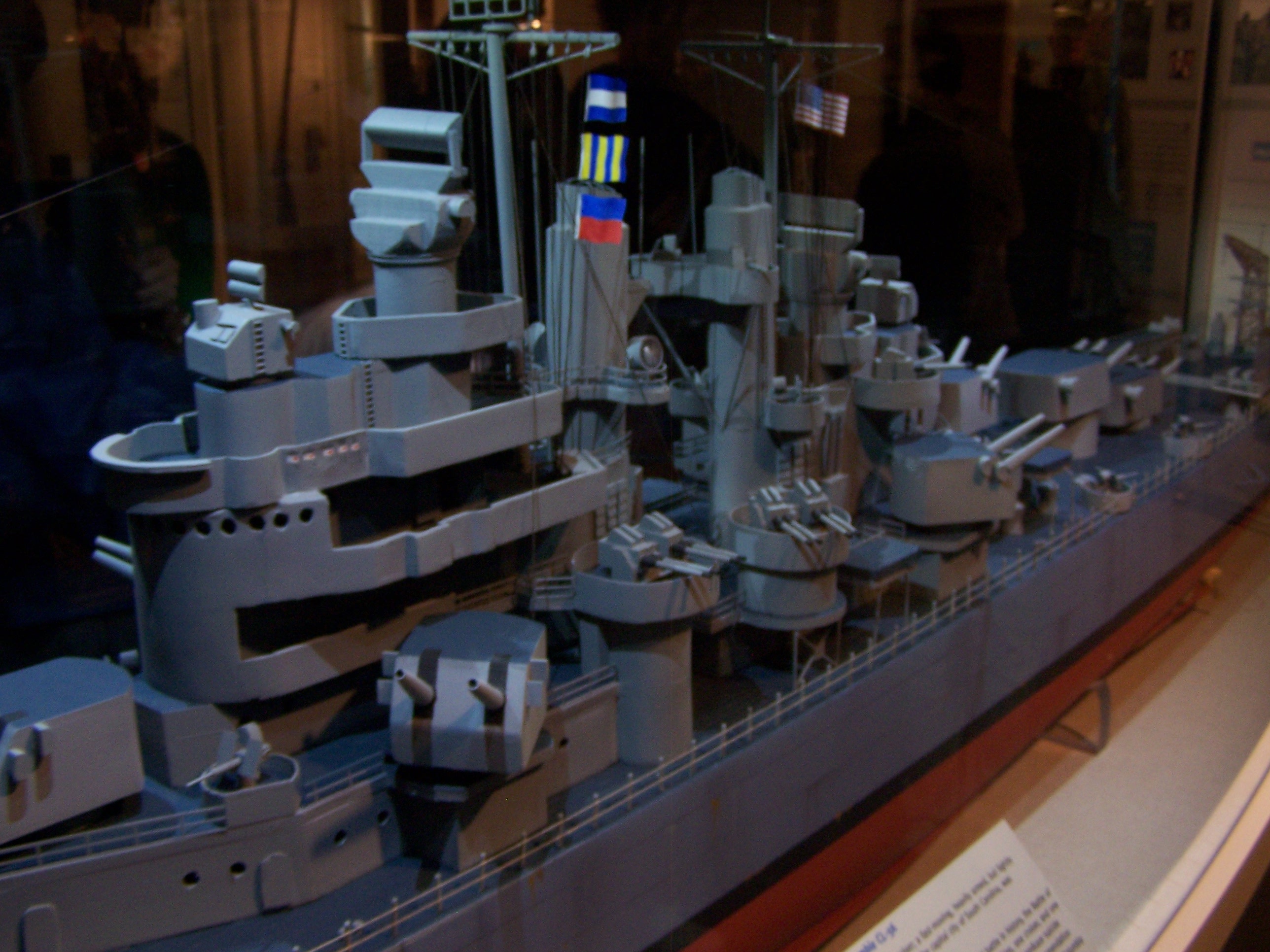
The Navy gave a model to the city, but it was stolen. Mr. Harper built the above model from scratch to use in its place.
Here is the link for the USS Columbia reunion website.
https://usscolumbiacl-56.com/index.html

https://usscolumbiacl-56.com/locations_of_columbia_monument.htmlThe monument was presented by the USS Columbia CL-56 Association on April 20, 1991. It is dedicated to the memory of all the shipmates who served aboard. Especially the 60 men who lost their lives in the service of their country.
Columbia Model in Floating Drydock located in Building 76 at the NAVY YARD, Washington, DC.

https://usscolumbiacl-56.com/locations_of_columbia_model_in_drydock.html
There is also another model of the ship that is located in the Confederate Relic Room and Military Museum in the rear of the SC State Museum on Huger St. in Columbia.

https://usscolumbiacl-56.com/locations_of_columbia_model_in_museum.htmlThis model was built by Columbia shipmate Thomas N. Harper, F Division.
The Navy gave a model to the city, but it was stolen. Mr. Harper built the above model from scratch to use in its place.
Here is the link for the USS Columbia reunion website.
https://usscolumbiacl-56.com/index.html
Last edited by a moderator:
She deserved better than the breaker’s yard for her heroism … should be down at Patriot’s Point today.USS Columbia, CL-56.
Columbia is struck by a kamikaze on January 6, 1945.
https://en.wikipedia.org/wiki/USS_Columbia_(CL-56)
BB-56, USS Washington, hero of the Second Naval Battle of Guadalcanal that saw BB vs BB gunnery duels that sunk the IJN BB Kirishima and was the first large-scale use in combat of 16" radar-directed gunfire that negated the IJN's excellence at night fighting. The Japanese were preoccupied at firing at Washington's slightly larger brother, the South Dakota, which was hampered throughout the entire battle with electrical problems, radar and gun director issues, and for inadvertently sailing too close to the enemy force, leaving Washington free to pound the targets on her radar including the Kirishima.
_in_Puget_Sound,_10_September_1945.jpg/1280px-USS_Washington_(BB-56)_in_Puget_Sound,_10_September_1945.jpg)
_in_Puget_Sound,_10_September_1945.jpg/1280px-USS_Washington_(BB-56)_in_Puget_Sound,_10_September_1945.jpg)
Last edited by a moderator:
BB-55, USS North Carolina - On 6 January 1944, TF 58, the fast carrier task force, was created under the command of Rear Admiral Marc Mitscher; North Carolina continued in her role as an escort for the fleet's carriers with the unit as part of TG 58.2. During the Battle of Kwajalein, North Carolina initially remained with the carriers during the pre-invasion bombardment, but was then detached to close with the island and join the bombardment group targeting Roi-Namur, which also included Washington, Indiana, and Massachusetts. During the attack, she sank a cargo ship in the harbor. After the islands were conquered in four days of heavy fighting, TF 58 departed to raid Truk, which had been Japan's primary staging area in the central Pacific. By this time, North Carolina had been transferred to TG 58.3. The attack, codenamed Operation Hailstone, inflicted serious damage, sinking or destroying 39 ships, destroying 211 aircraft and damaging another 104 planes.
_underway_in_the_Gilbert_islands,_November_1943.jpg/1920px-USS_North_Carolina_(BB-55)_underway_in_the_Gilbert_islands,_November_1943.jpg)
_underway_in_the_Gilbert_islands,_November_1943.jpg/1920px-USS_North_Carolina_(BB-55)_underway_in_the_Gilbert_islands,_November_1943.jpg)
'55 Chevy.


USS Winjah, CVE-54.
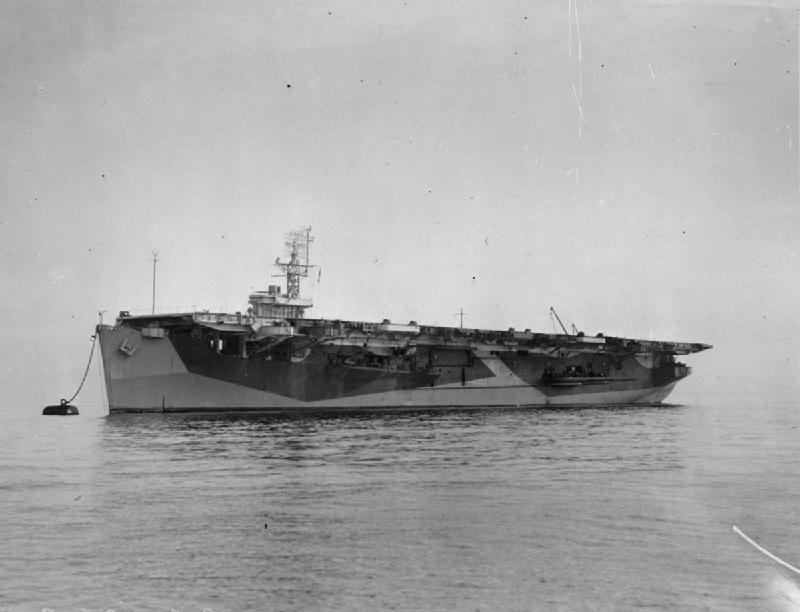

https://en.wikipedia.org/wiki/HMS_Reaper_(D82)USS Winjah (CVE-54) (originally AVG-54, later ACV-54), was a Bogue-class escort carrier of the United States Navy, leased to the Royal Navy during World War II.
Winjah was laid down on 5 June 1943 at Tacoma, Washington, by Seattle-Tacoma Shipbuilding. She was assigned to the United Kingdom under lend-lease on 23 June; she was re-designated CVE-54 on 15 July; launched on 22 November; and delivered to the British on 18 February 1944. From March to August 1945 she was part of the British Pacific Fleet attached to the 30th Aircraft Carrier Squadron.
Renamed HMS Reaper (D82), the carrier operated in the Royal Navy for the duration of World War II. After arriving at Norfolk, Virginia, on 13 May 1946, Reaper was decommissioned on 20 May and returned to the United States Government.
Just after World War II, Reaper was responsible for bringing from Cherbourg harbour many examples of former German Luftwaffe aircraft captured by the American military's Operation Lusty over to North America, such as the sole examples of the Arado Ar 234 jet reconnaissance bomber, and the Heinkel He 219 night fighter, that exist in American aviation museums in the 21st century. The aircraft arrived by air from Germany to Querqueville Airfield which is under a kilometer away from Cherbourg.
USS Chase, APD-54.
,_circa_in_1944.jpg/1280px-USS_Chase_(DE-158),_circa_in_1944.jpg)
Hulls were only 3/8" thick on those old destroyers, hence the nickname "tin cans".
,_circa_in_1944.jpg/1280px-USS_Chase_(DE-158),_circa_in_1944.jpg)
https://en.wikipedia.org/wiki/USS_Chase_(DE-158)History
USS Chase was named in honor of Admiral Jehu V. Chase (1869-1937). She was launched 24 April 1943 by Norfolk Navy Yard; sponsored by Mrs. J. V. Chase ; and commissioned 18 July 1943, Lieutenant Commander V. B. Staadecker, USNR, in command.
Battle of the Atlantic
Between 14 September 1943 and 23 November 1944, Chase escorted six transatlantic convoys between New York and Norfolk, Virginia and North African ports. During her second such crossing, while approaching Bizerte on 20 April 1944, Chase fired on attacking enemy torpedo bombers, driving them off, then rescued swimming survivors from three torpedoed merchant ships. During the return passage, Chase joined in the search for the German submarine U-967, which torpedoed Fechteler (DE-157) on 5 May, and rescued 52 survivors of the sinking.
Chase was converted to a Charles Lawrence-class high speed transport, reclassified APD-54 on 24 November 1944, and with conversion completed, sailed from Boston on 4 February 1945 for Pacific action waters.
Pacific War
She reached Ulithi on 18 March, and next day got underway for the Okinawa operation, sailing with the group scheduled to simulate a landing on the southern coast of the island as a diversion from the main assaults. This diversion received more attention from enemy aircraft than did the main landings as they made their demonstration on 1 April. Chase joined in the blaze of anti-aircraft fire which drove the enemy off, then moved north to join the anti-submarine screen protecting the landings.
Aside from two brief voyages to Guam and Ulithi, Chase continued on the dangerous duty of patrol off Okinawa until 20 May. On 20 May, Chase fired successfully on a diving kamikaze, but had to maneuver violently to avoid the falling aircraft. It splashed, a scant 10 yards (10 m) from the ship, and the explosion of the two bombs it carried ripped Chase's hull open, flooding the engine and fire rooms. With her steering gear jammed at hard left rudder, Chase drove off another suicide plane. Listing so badly as to be in danger of capsizing, Chase was kept afloat by the skillful work of her crew and towed into Kerama Retto for repairs. She was later towed across the Pacific to San Diego, arriving 11 October. Here she was decommissioned 15 January 1946, and sold for scrap on 13 November 1946.
Hulls were only 3/8" thick on those old destroyers, hence the nickname "tin cans".


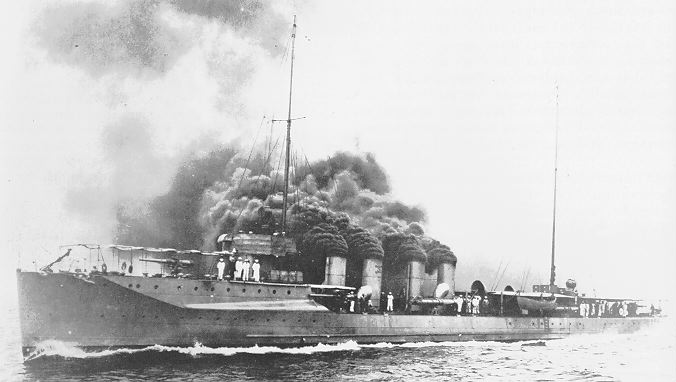
_underway_in_the_Pacific_Ocean.jpg/1920px-US_Navy_050805-N-6106R-013_The_guided_missile_destroyer_USS_Curtis_Wilbur_(DDG_54)_underway_in_the_Pacific_Ocean.jpg)
_underway_2004.jpg/1920px-USS_Antietam_(CG-54)_underway_2004.jpg)
_underway_at_sea_in_1942.jpg)

